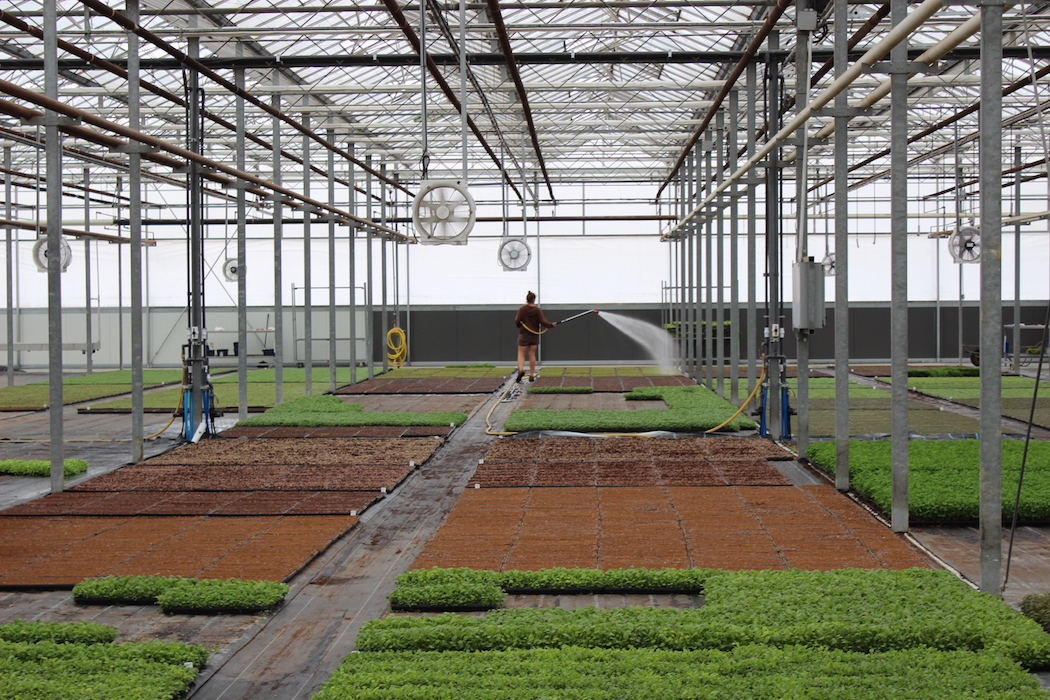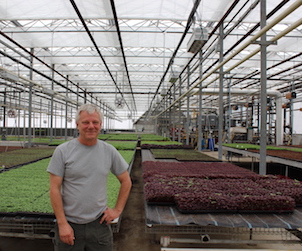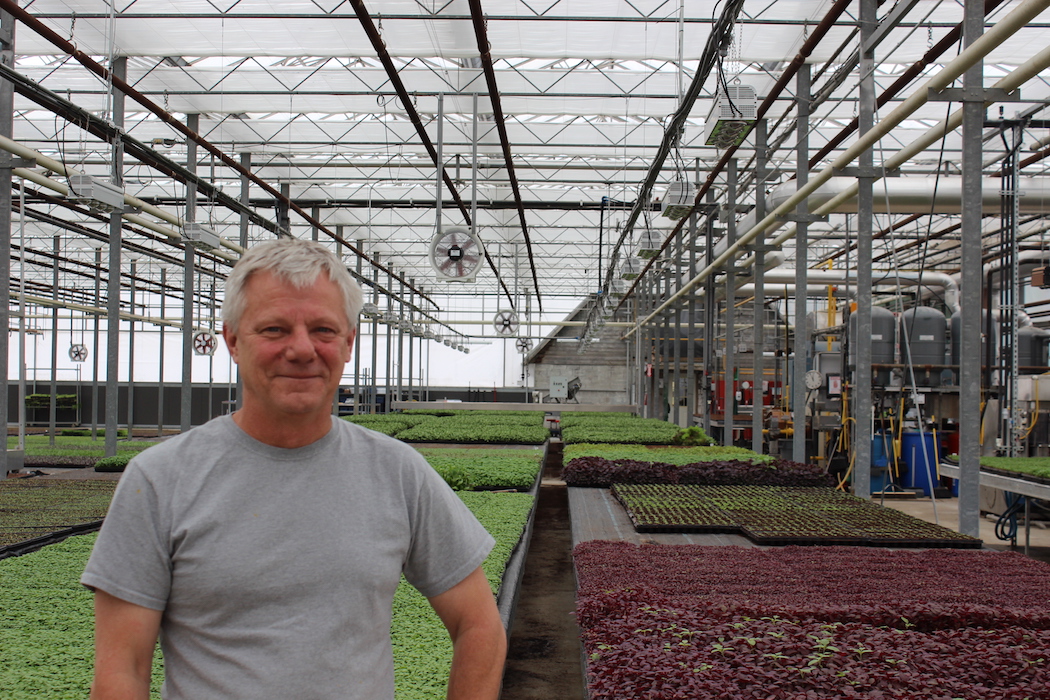Malcolm Jolley meets Ian Adamson at the innovative GTA indoor farm.
Ian Adamson built the greenhouse at Greenbelt Microgreens 14 years ago. It takes up an acre behind an old barn on Woodbine Avenue, just north of the Stouffville Side Road, near the exit from the 404. Without traffic, it’s a half hour to downtown Toronto. An acre doesn’t make for a very big farm, but the microgreens Adamson and his team grow there are, to state the obvious, not very big. The facility looks a bit like a patch of farmland in miniature, with a checker board of green and purple trays of small leaves arranged like fields. Microgreens aren’t just small, they’re also fast. They take about a week to grow-up from seed and provide Adamson with 50 or so harvests a year. The stores that sell bags of Greenbelt Microgreens, like Wholefoods and Longo’s, are therefore constantly restocked with fresh product, though the greens will last about two weeks from the time they are cut.
 Like many organic farmers, Adamson believes the secret of success is in the health of his soil. In order to avoid insecticides and pesticides, Greenbelt uses special peat mixes from Quebec. He relies on vigilant inspection and the microorganisms in the soil to combat disease. Different microgreen crops take different soil mixtures depending on their nutrient and pest control requirements.
Like many organic farmers, Adamson believes the secret of success is in the health of his soil. In order to avoid insecticides and pesticides, Greenbelt uses special peat mixes from Quebec. He relies on vigilant inspection and the microorganisms in the soil to combat disease. Different microgreen crops take different soil mixtures depending on their nutrient and pest control requirements.
Adamson is careful around making health claims about microgreens, which are baby versions of vegetables like kale, broccoli, arugula and so on. What he and his marketing manager, Ian Ritchie, will happily explain is that the young versions of the plants are much more nutritionally dense than their older versions. Basically all the goodness that will fill an adult plant is present in its juvenile form. The theory is that, bite for bite, microgreens will deliver more nutrients.
 What is undisputed about Greenbelt Microgreens is that their product is local, and the company is trying to change the origin of Torontonians’ salad. Adamson began his career by growing basil and other herbs for city chefs in the 1990’s. He’s committed to greenhouse agriculture and with the zeal of a true believer thinks it will transform the Canadian food economy. Adamson is not just proud of his local product, he’s proud of his local employees too, and does not hire temporary foreign workers as most labour intensive agricultural businesses do.
What is undisputed about Greenbelt Microgreens is that their product is local, and the company is trying to change the origin of Torontonians’ salad. Adamson began his career by growing basil and other herbs for city chefs in the 1990’s. He’s committed to greenhouse agriculture and with the zeal of a true believer thinks it will transform the Canadian food economy. Adamson is not just proud of his local product, he’s proud of his local employees too, and does not hire temporary foreign workers as most labour intensive agricultural businesses do.
The Greenbelt Microgreens greenhouse is productive 365 days a year, with no seasonal variation. Adamson can deliver fresh salad greens as easily in January as July. A sophisticated heating and cooling system keeps the air at a steady 20 degrees, while some crops, like sunflowers, are gently heated from below by mats that circulate warm water. Light, essential for photosynthesis, is kept steady by means of LED lights. Adamson agreed when I asked if him if LED lights, which are expensive to install but cheap (and kind to the environment) to run once in place, we’re a game changer in the greenhouse business. Apart from the ligths, Adamson has helped design much of the machinery at Greenbelt Microgreens, which is custom built and constantly being tweaked to improve efficiency.
Greenbelt Microgreens is growing. The company recently acquired an old flowers and houseplant greenhouse near Hamilton. The plan there, is to grow lettuce, and Adamson is experimenting with different kinds of lettuces at the Stouffville operation while the new facility is being refitted. He sees a great opportunity in salad lettuce, and explained to me that his soil gown versions of live lettuce have much more flavour than the standard, American gown, hydroponic product that sits on organic shelves.
Greenbelt Microgreens’ business is also growing. Adamson was busy when I visited him getting ready to work with a distributor in the Food Terminal in anticipation of being available in more and more Ontario stores. He is measured on the growth of the business, carefully explaining tha the wants it, like his greens, to be sustainable. Greenbelt measures its profits, as its website explains, in a ‘Triple Bottom Line’: people, planet and profit.
If there is a new food economy being built, it must look a lot like Greenbelt Microgreens.
 Malcolm Jolley is a founding editor of Good Food Revolution and Executive Director of Good Food Media, the company that publishes it. Follow him on Twitter or Facebook.
Malcolm Jolley is a founding editor of Good Food Revolution and Executive Director of Good Food Media, the company that publishes it. Follow him on Twitter or Facebook.








